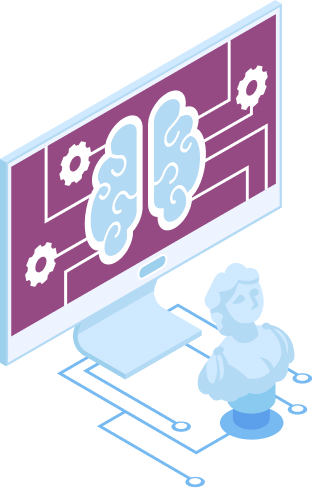In recent years, the concept of gamification in education has emerged as one of the leading eLearning trends of 2024, marking a groundbreaking approach to transform traditional learning environments into dynamic, engaging, and interactive spaces. By integrating game mechanics into educational content, educators are not only capturing the attention of students but also enhancing their motivation to learn. This blog explores how gamification, a prominent trend among the eLearning trends of 2024, is revolutionizing the educational landscape, its benefits, challenges, and what the future holds for this innovative teaching method. As we delve deeper into the eLearning trends of 2024, it becomes evident that gamification is not just a fleeting trend but a substantial shift towards making learning more accessible, enjoyable, and effective for students of all ages.
Historical context
The idea of using games for learning is not new; however, the term “gamification” gained traction in the early 21st century as digital technologies became more intertwined with daily life. Initially used in marketing and business to engage customers, gamification quickly showed its potential in education, offering a novel way to engage students by leveraging their natural desire for competition, achievement, and collaboration.
Power of gamification in education
Gamification in education, enhanced by AI in eLearning, refers to the integration of game elements such as point scoring, competition with others, and rules of play in educational settings. This approach, augmented by AI technologies, aims to increase student engagement, motivation, and participation by making learning more fun and interactive. By leveraging AI, educational platforms can personalize learning experiences, adapt challenges to fit the learner’s level, and provide immediate feedback, thereby tapping into the psychological aspects of gaming, such as the desire for achievement and recognition, to make learning more effective and tailored to individual needs.

Benefits of gamification in education
The benefits of gamification in education are manifold. It promotes active learning and increases student engagement by making lessons more enjoyable. Gamification can cater to various learning styles and paces, offering personalized learning experiences. It also encourages problem-solving and critical thinking skills, as students often face challenges that require innovative solutions within games. Moreover, gamification provides immediate feedback, allowing students to understand their progress and areas for improvement in real-time.
Challenges of adopting gamification in education
Despite its benefits, the integration of gamification into educational systems is not without challenges. One significant barrier is the cost and resources required to develop and implement gamified learning experiences. There’s also the risk of overemphasis on the competitive aspects of gaming, which may demotivate some students. Additionally, ensuring that the gamified content is educationally sound and aligns with learning objectives is crucial for its effectiveness.

Gamification in уducation: Real-world examples
Several successful examples of gamification in education, including microlearning platforms, illustrate its potential impact. Duolingo, a language learning app and a notable microlearning platform, uses gamification by awarding points for completed lessons and offering a competitive leaderboard. Classcraft, another innovative approach that integrates the principles of microlearning, transforms the classroom experience by turning students’ progress into a fantasy game, complete with avatars, challenges, and rewards. These examples demonstrate how gamification, especially when incorporated into microlearning platforms, can make learning more engaging and tailored to the digital age.
How Duolingo uses gamification
Duolingo incorporates various gamification strategies to keep learners motivated and engaged. Here are some of the key elements:
Points and levels
Learners earn points for completing lessons, which contributes to a sense of achievement and progress. These points can unlock new levels and content, encouraging learners to keep advancing in their language learning journey.
Streaks
To promote consistency, Duolingo uses “streaks” to track the number of consecutive days a user spends learning on the app. Maintaining long streaks becomes a goal in itself, motivating learners to return daily.
Leaderboards
Competitive leaderboards pit learners against others at a similar level worldwide. This element of competition adds an extra layer of motivation, pushing learners to put in more effort to climb the ranks.
In-app rewards and currency
Duolingo offers in-app rewards and its own currency, “Lingots,” which learners can earn through various activities. These can be used to purchase power-ups, extra lessons, and other fun and useful items, adding an additional layer of reward and incentive.
Immediate feedback
Immediate feedback on exercises allows learners to quickly understand their mistakes and learn from them, much like instant feedback in games that helps players adjust their strategies in real time.
How Classcraft uses gamification
In the evolving landscape of educational technology, Classcraft stands out as a prime example of how gamification can be seamlessly integrated into the classroom to enhance learning, motivation, and student engagement. Unlike traditional learning platforms, Classcraft transforms the educational experience into a collaborative and immersive adventure, leveraging the principles of gamification to create a unique and impactful learning environment.
Classroom gamification
Classcraft reimagines the classroom as a fantasy world, where students become heroes of their own learning journey. By participating in this gamified universe, students are not just passive recipients of information but active players in a collaborative narrative. Here’s how Classcraft uses gamification to revolutionize the educational experience:
Avatars and roles
Upon joining Classcraft, each student creates a personalized avatar and chooses a role (such as Mage, Warrior, or Healer), each with its own unique strengths and abilities. This personalization makes the learning experience more engaging and gives students a sense of ownership over their educational journey.
Points and Experience (XP)
Students earn points and experience (XP) for completing academic tasks, exhibiting positive behavior, and achieving personal and class goals. These points can lead to leveling up their characters, unlocking new powers (abilities that have real-life applications, like being able to hand in an assignment late), and earning various rewards. This system mirrors the progress and achievement mechanics found in games, fostering a sense of accomplishment and progress.
Teams and collaboration
Classcraft places students in teams, encouraging them to work together to succeed. This aspect of the game promotes collaboration, communication, and social skills, as students must strategize and support one another to advance in the game. The team-based approach also creates a sense of community and belonging, which can significantly enhance the learning environment.
Quests and curriculum integration
Teachers can create quests that align with the curriculum, turning academic content and classroom activities into exciting challenges. These quests can be customized to fit any subject or grade level, making learning more relevant and engaging. As students progress through these quests, they’re not just learning academic content; they’re embarking on an adventure that makes education an enjoyable and memorable experience.
Real-time feedback
Classcraft provides immediate feedback through its point and level system, allowing students to see the consequences of their actions in real-time. This immediate feedback loop helps students understand the impact of their behavior and choices, both positive and negative, on their learning and their team. Additionally, the platform can be used as a behavior management tool, with teachers awarding or deducting points based on student behavior, thereby reinforcing positive classroom dynamics.
Parental involvement
Classcraft also includes features that involve parents in the gamified learning experience. Parents can track their child’s progress, view upcoming quests, and see the rewards their children earn, making it easier for them to support and encourage their child’s learning journey outside of the classroom.
Future of gamification in education
The future of gamification in education looks promising, with advancements in technology paving the way for more immersive and sophisticated gamified learning experiences. Virtual Reality (VR) and Augmented Reality (AR) are expected to play a significant role, offering even more engaging and interactive ways to learn. As research into gamification’s effectiveness continues, it’s likely that more educators will embrace this approach, further integrating game elements into curricula across all levels of education.
Conclusion
Gamification in education represents a significant shift in how we approach teaching and learning. By making learning more engaging, personalized, and interactive, gamification has the potential to revolutionize education. While there are challenges to its implementation, the benefits—increased student engagement, improved motivation, and enhanced learning outcomes—make it a worthwhile endeavor. As we look to the future, it’s clear that gamification will continue to play a key role in shaping educational practices, making learning an enjoyable and effective experience for students around the globe.
